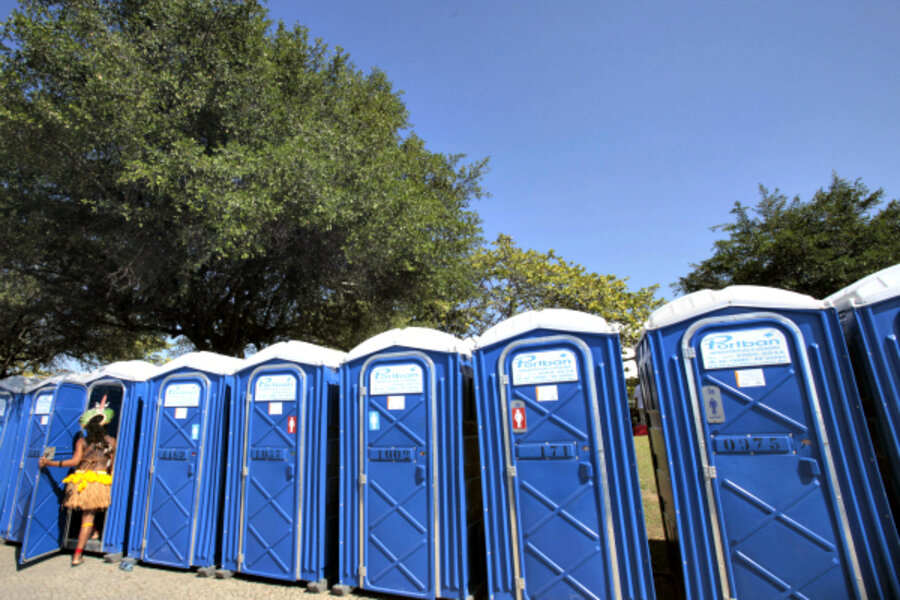An entrepreneurial approach to sanitation
Loading...
In most of the world’s slums, sanitation is a daily challenge. In the absence of sewage systems, people living in slums in Nairobi, Kolkata, and São Paulo rely on rows of pit latrines shared by hundreds of other people, while others use “flying toilets” to dispose of waste. Disease and infection spreads easily in such environments.
But some social entrepreneurs in Nairobi, Kenya, are picking up where the government has left off and attempting to provide sanitary options to the slums. Sanergy, for example, is a company launched by a group of students at Massachusetts Institute of Technology’s (MIT) Sloan School of Management. The group has designed low-profile sanitation centers that can be constructed anywhere to provide hot showers and clean toilets.
These facilities can be built quickly and easily with affordable materials. Waste from the centers is deposited into airtight containers that are collected daily. Then it’s brought to processing facilities that can convert it into biogas. The biogas generates electricity, while the leftover material is made into fertilizer.
RELATED: World Toilet Day: Top 10 nations lacking toilets
The company won a $100,000 grant from MIT and has been building its first units in Nairobi. It charges a low pay-per-use fee and hopes to grow by franchising the operation of its units, creating an income opportunity for enterprising residents.
As the number of toilets proliferates, so too will the amount of energy the company is able to generate from its processing facilities. It hopes to eventually generate enough energy that it can sell its power to the national grid.
The company’s unique and innovative approach is notable for the way it combines the decentralization of waste collection with the centralization of waste processing. Retrofitting the slums with proper sewage drains is a near impossibility and can be an expensive and potentially politically volatile effort in areas where landownership is at best ambiguous.
The self-contained units grant access to sanitary facilities to even those far off the grid. But by centralizing the processing of waste, Sanergy’s facilities will take advantage of the economies of scale present in the waste-conversion process.
By creating products of value out of the waste, the company creates an incentive for others to set up their own facilities in partnership with Sanergy. The company hopes that there may eventually be facilities on every neighborhood block, significantly increasing the number of people with access to clean sanitation.
The energy generated through the waste production will be a clean option to power a growing economy, and the fertilizer is a nutrient-rich alternative to expensive petroleum-based fertilizers.
• Jeffrey Lamoureux is a research intern with Nourishing the Planet. To purchase your own copy of "State of the World 2011: Innovations that Nourish the Planet," please click HERE.
• This article originally appeared at Nourishing the Planet, a blog published by the Worldwatch Institute.
• Sign up to receive a weekly selection of practical and inspiring Change Agent articles by clicking here.





